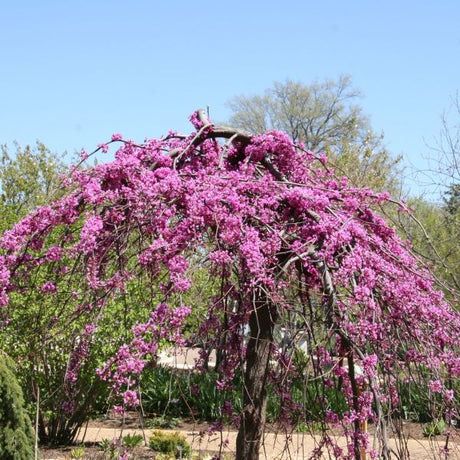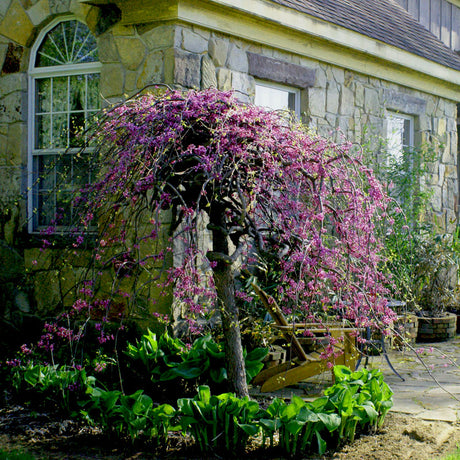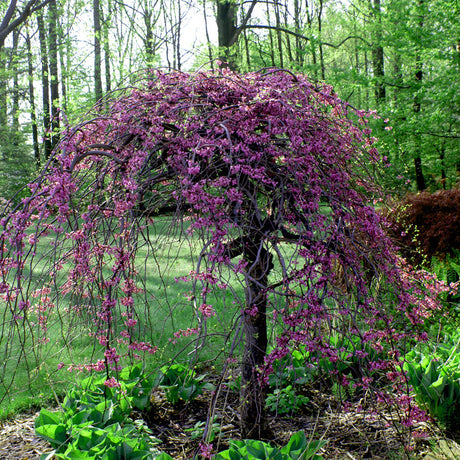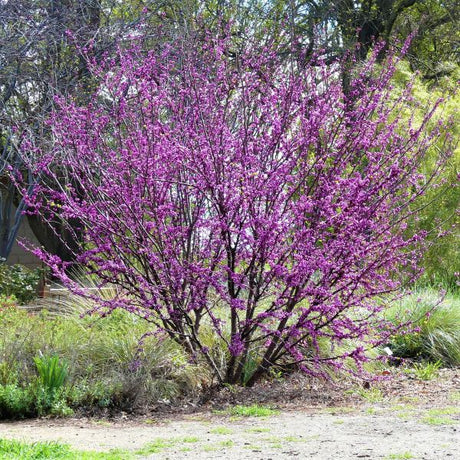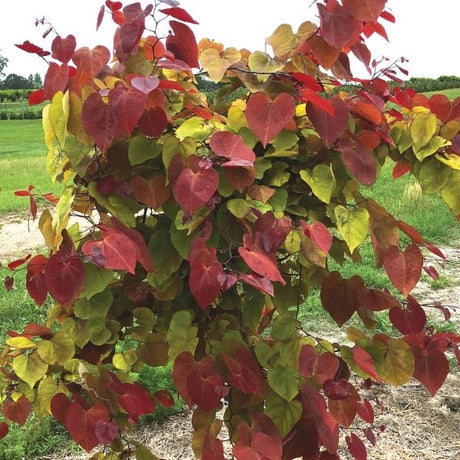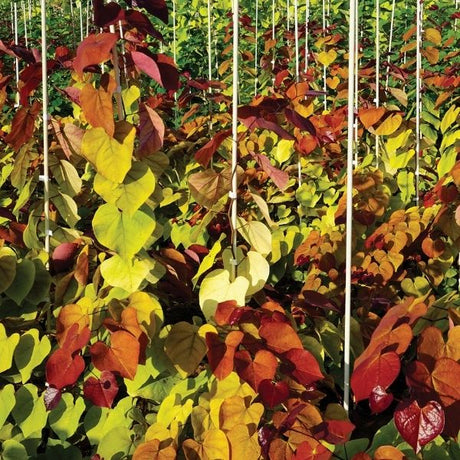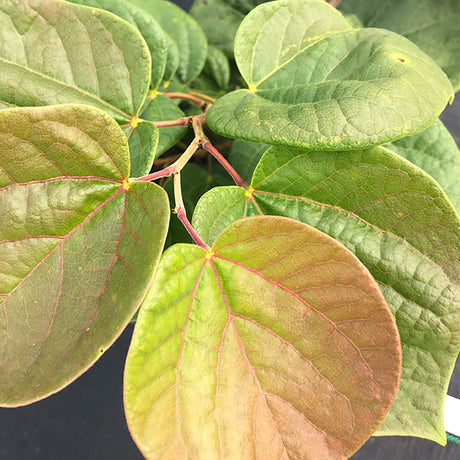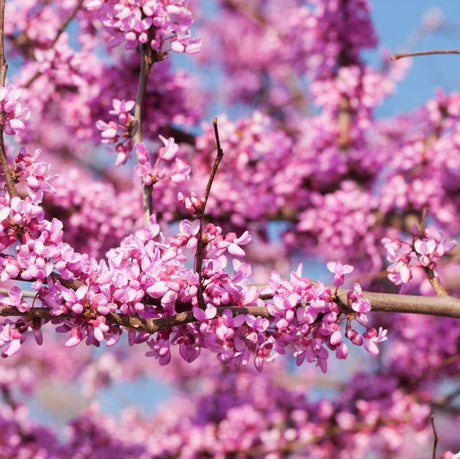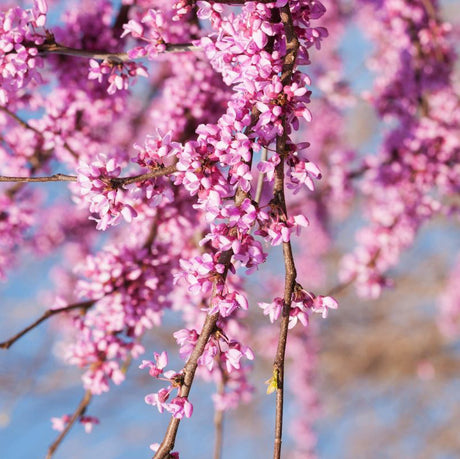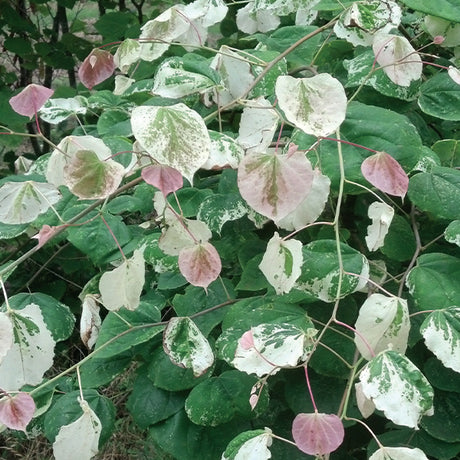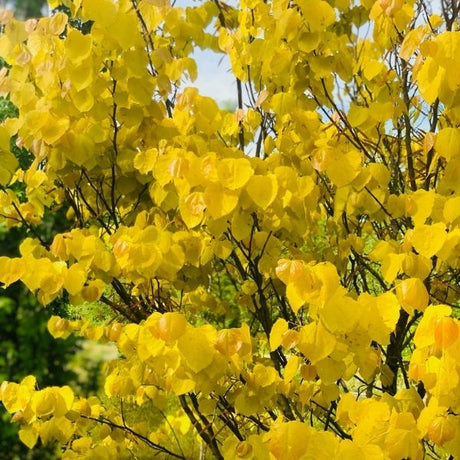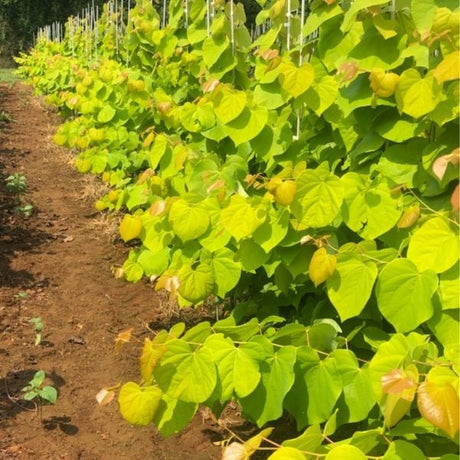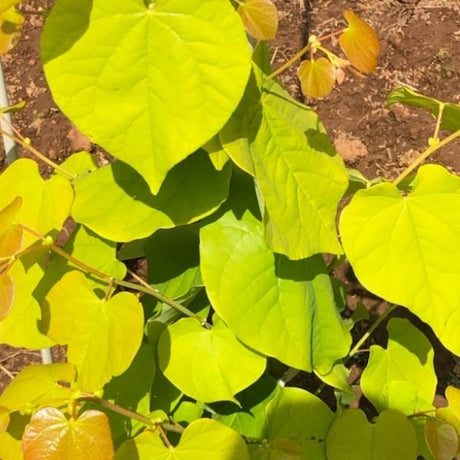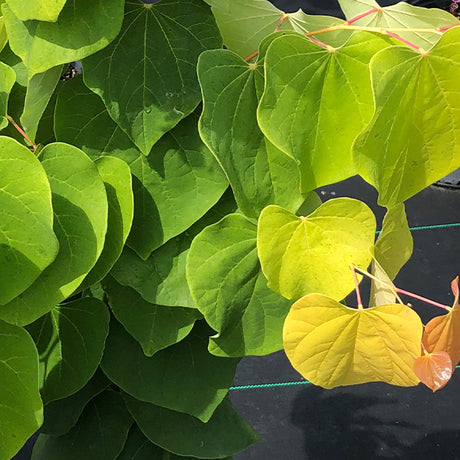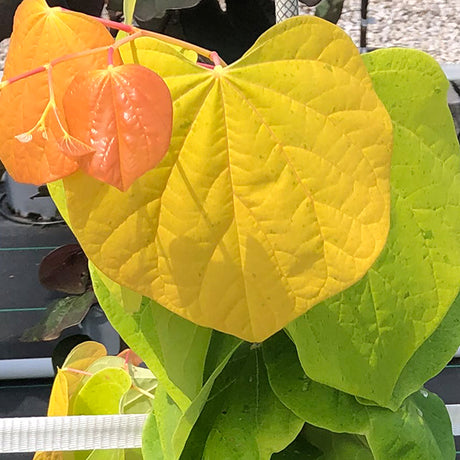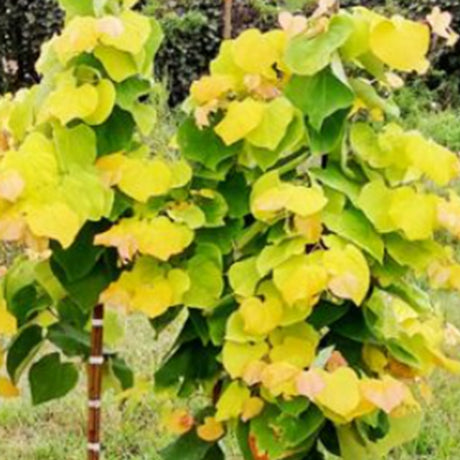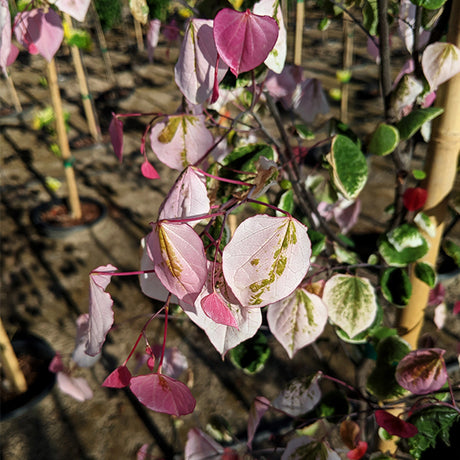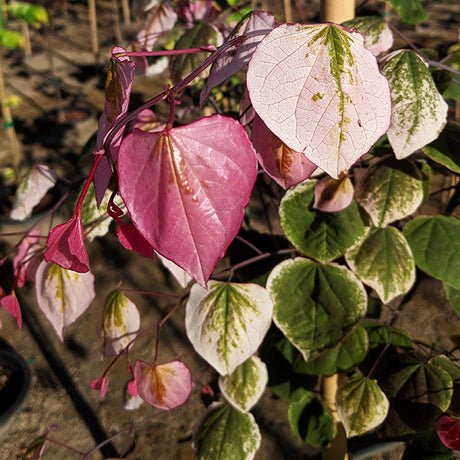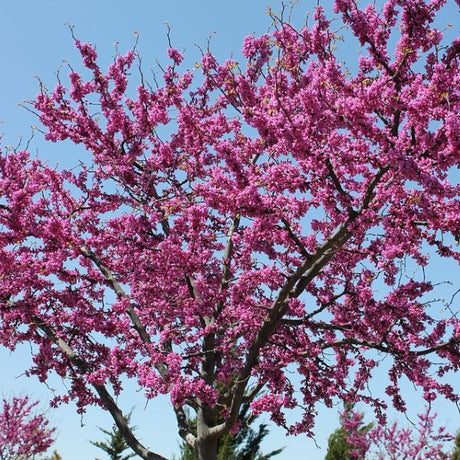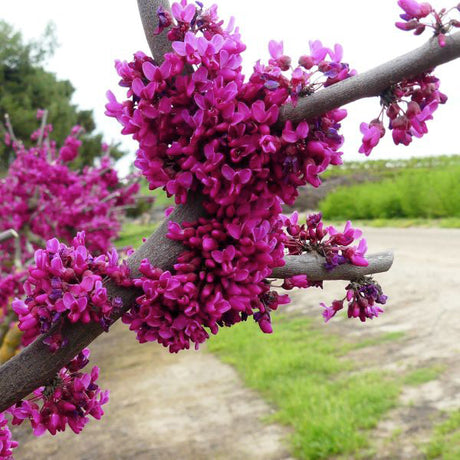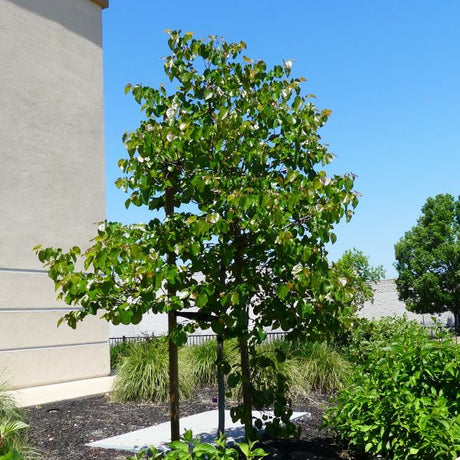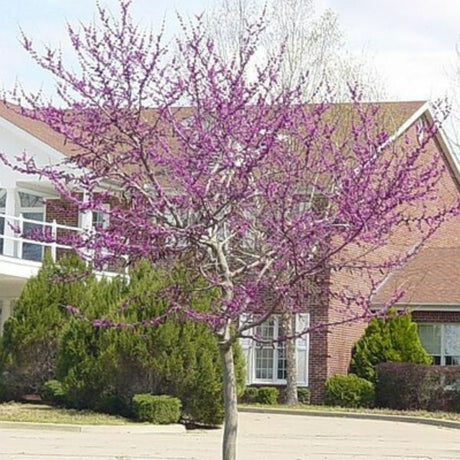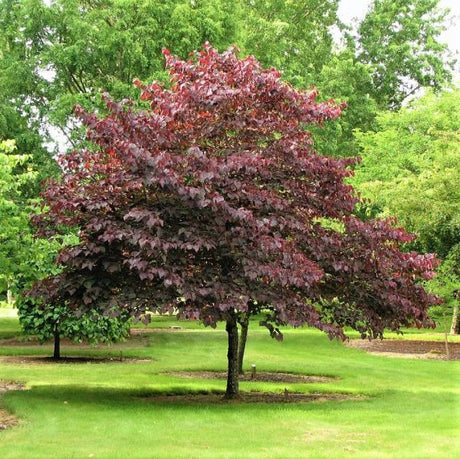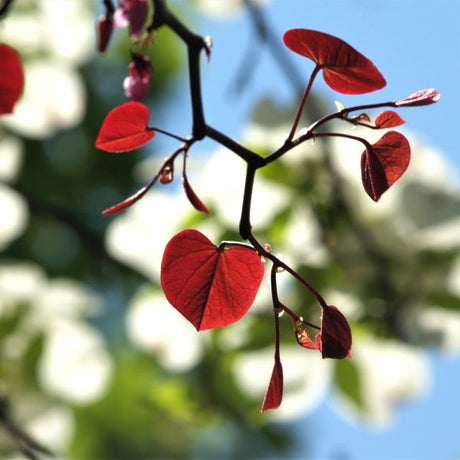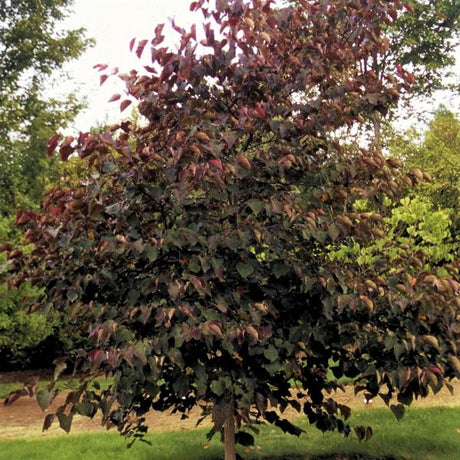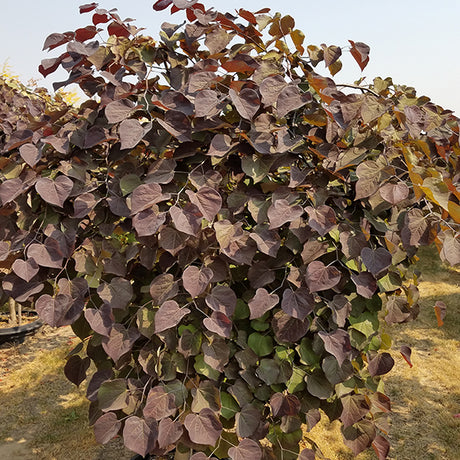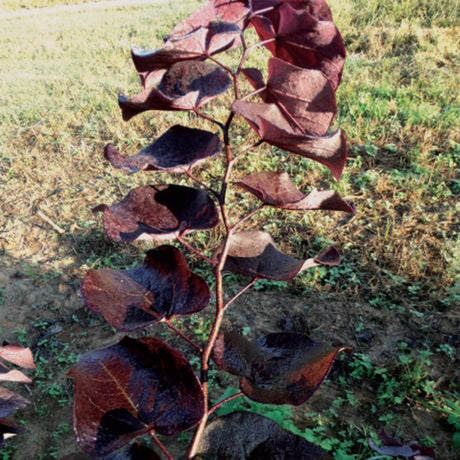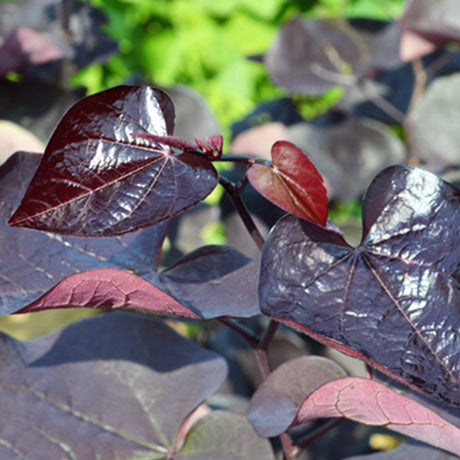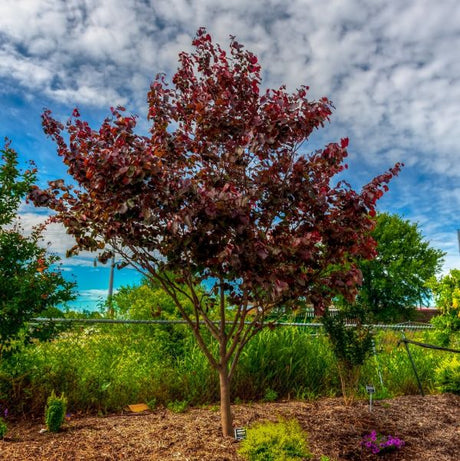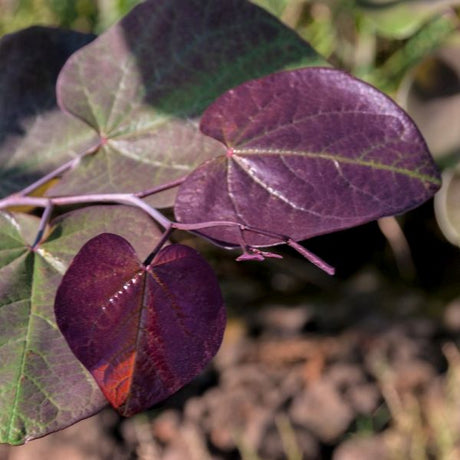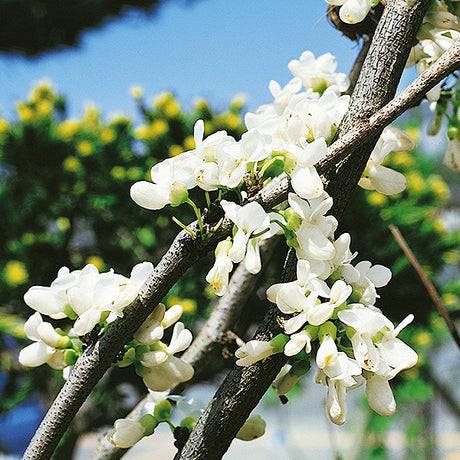- Sold out
- Sold outRegular price From $9977Unit price /Unavailable
- Regular price From $12877Unit price /Unavailable
- Sold out
- Sold out
- Sold out
- Sold outRegular price $12964Unit price /Unavailable
- Sold outRegular price From $10978Unit price /Unavailable
Cascading Hearts Weeping Redbud Tree
Regular price From $11947Unit price /Unavailable- Sold out
- Sold outNew arrivalRegular price $7709Unit price /Unavailable
- Sold outNew arrivalRegular price $000Unit price /Unavailable
- Sold out
- Sold out
- Regular price From $11958Unit price /Unavailable
- Sold out
- Sold out
- Regular price $67490Unit price /Unavailable
- Regular price $19990Unit price /Unavailable
- Sold outRegular price $18956Unit price /Unavailable
Redbud Trees for Sale - America's Favorite Spring Bloomers

Looking for a show-stopping tree that blooms before anything else in spring? Redbud trees burst into electric pink-purple flowers in March through early May, creating a stunning display that literally stops traffic. At Nature Hills Nursery, we offer 15+ varieties of these beloved native trees, from classic Eastern Redbuds to dramatic weeping forms and colorful foliage cultivars.
Why gardeners love Redbud trees: They're native to North America, moderately deer-resistant, adaptable to various soils, and provide four-season interest in compact sizes perfect for smaller yards. Most varieties mature at just 20-30 feet tall and wide, making them ideal specimen trees, foundation plantings, or understory accents near larger shade trees.
Popular Redbud Tree Varieties - Find Your Perfect Match
Eastern Redbud trees (Cercis canadensis) are cold-hardy workhorses for zones 4-9. These native beauties feature heart-shaped leaves and Sweet Pea-shaped flowers that cover bare branches and even grow down slightly twisted trunks before leaves emerge in spring. They're some of the first trees to bloom, providing critical early nectar for honeybees and native pollinators.
Standout Foliage Varieties
Forest Pansy Redbud delivers dramatic burgundy-purple leaves all season, transforming to wild gold and purple fall color. This variety is particularly striking planted against lighter-colored homes or evergreen backgrounds.
Rising Sun Redbud showcases saturated Day-Glo hues you'll study all season long. Each new leaf emerges in stunning apricot and yellow, then matures to vibrant orange and lime green combinations.
Graceful Weeping Forms
Ruby Falls Redbud combines dark burgundy foliage with a compact weeping habit. This modern selection stays petite (typically 6-10 feet), making it perfect for small gardens, patios, or even large containers.
Lavender Twist Weeping Redbud features romantic cascading branches that create a living sculpture. Dark, zigzagging branches drape to the ground in a marvelous display, especially stunning in winter when you can appreciate the architectural form.
Whitewater Weeping Redbud offers unique variegated foliage that looks hand-painted with splashes of white. This outstanding focal-point specimen draws attention in every season.
Regional Champions for Challenging Climates

Oklahoma Redbud performs like a champ in hot, arid climates with excellent drought tolerance once established. If you garden in zones 6-9 with dry heat, choose this variety for extremely glossy, heat-resistant foliage and reliable performance.
Western Redbud (Cercis occidentalis) is a smaller variety working beautifully in zones 6-9. It's naturally more drought-tolerant than Eastern types and can be maintained as a large multi-stemmed shrub with rounded leaves by keeping lower branches intact.
Four Seasons of Beauty in Your Landscape

Spring: Redbud trees bloom about a week before Flowering Dogwoods, giving you the earliest colorful show in your yard. The striking flowers appear directly on branches and trunk in late March through May depending on your zone.
Summer: Smooth, glossy, heart-shaped leaves create attractive dense shade. The foliage hangs from long petioles that flutter and twist in the breeze. Set up seating underneath to enjoy the dappled shade with friends and family.
Fall: Most varieties transform to lovely golden yellow. Two-inch long purple seed pods add visual interest and feed local birds like Cardinals and Bobwhites through winter.
Winter: The architectural branching structure shines through, especially attractive on weeping varieties. The zigzagging branch pattern creates interesting shadows and sculptural appeal in the winter garden.
Perfect Companion Plants for Redbud Trees
Redbud trees work beautifully as understory specimens beneath taller oaks or as standalone focal points. Plant these companions underneath and nearby for stunning spring combinations:
- Spring-blooming bulbs like daffodils and tulips
- Forsythia and flowering quince for layered spring color
- Azaleas and rhododendrons in partial shade locations
- Hydrangeas for summer continuation
- Native ferns and hostas in shadier spots
- Perennial salvia and coneflowers in full sun areas
Redbud Tree Care Made Simple
Planting Location: Choose full sun (6+ hours) for maximum blooms, though Redbuds tolerate partial shade well. They appreciate good air circulation and morning sun, which helps dry dew quickly and prevents disease issues.
Soil Requirements: Redbuds adapt to clay, loam, or sandy soils but need well-drained conditions. They won't tolerate swampy or constantly wet soil. If drainage is questionable, mound up 6-12 inches of additional soil to raise the planting area.
Planting Depth: Don't plant too deeply. Keep your Redbud at the same level it grew in the nursery container. Dig your hole twice as wide as the root ball but no deeper. Use Nature Hills Root Booster in the planting hole for life-long symbiotic support.
Watering: Water regularly during the first two growing seasons to establish a deep, extensive root system. Once established (typically after 2-3 years), most varieties show good drought tolerance, especially Oklahoma and Western types.
Mulching: Apply a 2-4 inch layer of organic mulch over the root zone, pulling it back 3-4 inches from the trunk to prevent moisture issues and pest problems.
Pruning: Prune after flowering finishes for the season, typically late spring. Remove any dead, damaged, or crossing branches to open the canopy to air and sunlight. Redbud wood is hard and heavy, so use sharp, clean tools. Light pruning helps you custom-fit your tree to its space.
Common Questions About Redbud Trees
Are Redbud trees deer resistant? Yes, moderately. While deer may browse young trees or new growth during harsh winters, established Redbuds are generally left alone. The Forest Pansy variety tends to be more deer-resistant than others.
Do Redbud tree roots damage foundations or sidewalks? No. Redbuds have non-invasive root systems that won't buckle concrete or threaten foundations. They're safe to plant 6-8 feet from structures.
When do Redbud trees bloom? Bloom time varies by zone and variety, typically March in southern zones (7-9) through May in northern zones (4-5). They're often the first major flowering tree to bloom in spring.
How fast do Redbud trees grow? Expect moderate growth of 12-24 inches per year once established. Trees typically reach mature size in 10-15 years.
What's the lifespan of a Redbud tree? Healthy Redbuds typically live 50-75 years with proper care, though some specimens have been documented at 100+ years.
Can I grow a Redbud tree in a container? Yes! Dwarf varieties like Ruby Falls and Ace of Hearts work beautifully in large containers (at least 20-24 inches wide and deep) on patios and decks. Use quality potting soil and provide winter protection in zones 4-6.
Why Choose Nature Hills for Redbud Trees?
Redbuds are among America's favorite native flowering trees. At Nature Hills Nursery, every tree is expertly grown, carefully packaged, and shipped at the ideal time for your growing zone. We offer:
- Healthy, nursery-grown trees with established root systems
- Multiple size options from 3-gallon starter trees to 7-gallon instant impact specimens
- Free shipping on qualified orders
- Our famous Nature Hills Warranty
- Expert growing advice and lifetime customer support
Order your favorite redbud tree varieties today and enjoy decades of stunning spring blooms, summer shade, and year-round beauty. Start your growing season right with a tree that signals spring has arrived.
FAQ's for Buying Redbud Trees Online
When is the best time to plant a Redbud tree?
When is the best time to plant a Redbud tree?
The ideal time to plant a Redbud tree is in early spring or fall when temperatures are cooler. Planting during these seasons helps the tree establish roots before summer heat or winter frost. Be sure to select a location with full sun to partial shade and well-drained soil.
Do Redbud trees need full sun to bloom well?
Do Redbud trees need full sun to bloom well?
While Redbud trees tolerate partial shade, they bloom best in full sun. At least 6 hours of direct sunlight per day encourages more vibrant and abundant early spring blossoms. Morning sun also helps reduce moisture-related issues by drying dew from the foliage.
What are the most popular Redbud tree varieties?
What are the most popular Redbud tree varieties?
Popular Redbud tree varieties include the deep purple-leaved Forest Pansy, the multi-colored Rising Sun, and compact weeping forms like Ruby Falls and Lavender Twist. For hot, dry regions, Oklahoma Redbud is highly recommended for its glossy foliage and drought tolerance.
How big do Redbud trees get and are they good for small spaces?
How big do Redbud trees get and are they good for small spaces?
Redbud trees typically grow between 15 to 30 feet tall and wide, making them an excellent choice for small gardens and urban landscapes. Their compact size, heart-shaped leaves, and early spring blooms make them standout ornamental trees for front yards and patios.
Are Redbud trees easy to care for?
Are Redbud trees easy to care for?
Yes, Redbud trees are low-maintenance and easy to grow. They require well-drained soil, consistent moisture, and benefit from a layer of mulch. Prune dead or crowded branches after blooming to improve airflow and shape the canopy. Avoid planting in soggy soil to prevent root rot.

